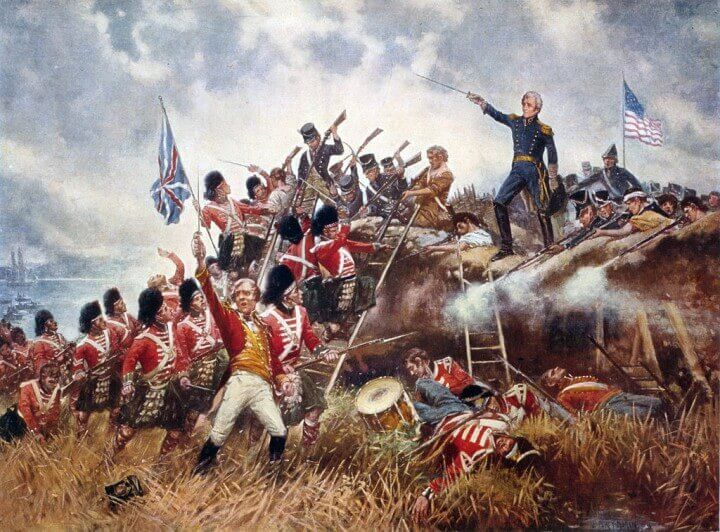
1. A Long Battle:
The Battle of New Orleans was one of a series of battles that were fought during the War of 1812. The Battle of New Orleans is generally considered the final battle that was fought in the War of 1812. Nonetheless, even after the victory of the Americans over the British, hostilities continued until February 1815. The official date of the Battle of New Orleans is January 8, 1815, although the Louisiana Campaign took place from December 1814-January 8, 1815, in an effort to exert British control over Louisiana trade
2. Treaty to End the War was Signed Two Weeks Prior:
A treaty was signed between the United States and Great Britain, in Belgium on December 24, 1814, effectually ending the War of 1812. The treaty was signed on December 28, 1814. News didn’t travel quickly in those days, however and the war waged on for months later.
3. Orders in Council and Burning Down the White House:
The Battle of New Orleans and the War of 1812 were in response to the British Orders in Council in 1807. The Orders in Council were, in sum an order by the British government restricting U.S. trade. The British didn’t want the U.S. to have trade relations with British adversarial countries, like France. On August 24, 1814, British troops set fire to many government buildings in Washington D.C., including the white house and the capitol building. This was done in retaliation to the U.S. attacks in the Raid of Port Dover—another battle that was a part of the War of 1812. This is the only time in the history of the United States that an attack has been made on the White House.
4. What did the British want with the port of New Orleans?
The goal of the British in the Battle of New Orleans was to gain control of the port of New Orleans. Capturing the port of New Orleans would enable the British to command the Mississippi River and therefore, sever the American trade route to the Gulf of Mexico and other vital commercial paths of trade.
5. Casualties and the Battle of New Orleans:
The battle that took place on January 8, 1815, over the port of New Orleans was a major victory for America and a major defeat for the British. On January 8, 1815, Major General Andrew Jackson led soldiers, Native Americans, slaves, frontiersmen, and pirates to a victory over the formidable British armed forces. Andrew Jackson’s victory, with his amateur army, hailed him a national hero. (This victory would secure Andrew Jackson’s eventual future as our 7th U.S. President, serving two terms.)
The British faced off against the Americans with an 8,000 man infantry, compared to a 3,000 man ragtag crew of the Americans. Despite their unfair advantage, the British were defeated within about 30 minutes. The war casualties for the British was staggering. They British lost 300 men, while only 13 American were killed in the conflict.
6. The Role of Slaves and Freed Blacks in the Battle of New Orleans:
Freed black slaves fought on both sides in the Battle of New Orleans. The Battle of New Orleans was the first battle in which people of color fought on both sides.
The “Gens de Couleur Libre” or the Free Men of Color of New Orleans fought on the American side. The Free Men of Color was the only voluntary militia and had its own officers. Andrew Jackson was happy to have the battalion of freed slaves to fight valiantly beside him in the Battle of New Orleans. The battalion proved to be a very important factor in the American victory. After the battle, Louisiana State Legislature honored the soldiers for their patriotism and their bravery.
The black troops of the West India Regiments fought on the British side and had previously fought against the Napoleonic troops in Guadeloupe, Martinique, and St. Lucia—winning numerous battle honors. Slaves could earn their freedom by joining the West India Regiment and were largely recruited in the Caribbean colonies.
7. Not Just One Battle:
The Battle of New Orleans wasn’t just one battle. It was a series of battles that began on December 24, 1814 and continued until the ultimate defeat of the British on January 8, 1815. Hostilities continued, with the Battle of Lake Borgne, the night attack of December 23, 1814, and the Battle of January 8, 1815. All were all attacks on the U.S. by British forces, in an attempt to regulate trade in the Port of New Orleans.
8. Hostilities Continue—Fort St. Phillip and Mobile, Alabama:
On January 9, 1815, the British troops attacked Fort St. Phillip. The well-fortified fort protected New Orleans from an assault by sea. A 45 yard bog of mud surrounded Fort St. Phillip, rendering it impenetrable, combined with its well-armed garrison. For 10 days, British troops hammered Fort St. Phillip with cannon file, before finally withdrawing their ships on January 18, 1815.
9. Hostilities Continue—-Capture of Mobile, Alabama:
In February, 1815, after withdrawing troops from Fort St. Phillip, the British moved on to Mobile, Alabama, in another attempt to block Louisiana trade. They attacked Fort Bowyer, which some argue was the last land battle between U.S. and British forces in the War of 1812 (Not the Battle of New Orleans.) The 400 U.S. troops stationed at Fort Bowyer were overwhelmed by the assault of 3,000 British troops. William Lawrence, fort commander of Fort Bowyer surrendered to British troops on February 11, 1815. Days after the defeat of Fort Bowyer, word spread that the Treaty of Ghent had been signed, thus ending the war.
10. Treaty of Ghent Ratified:
The Treaty of Ghent was drafted and signed in Ghent, Belgium on December 24, 1814. It was ratified by the British Parliament on December 30, 1814 and Prince Regent (eventually to become King George IV) signed the treaty into law. However, the United States congress did not ratify the treaty until February 18, 1815.

Leave a Reply